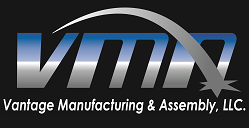DRUPAL CMS WEBSITE EDITING
This document is intended to be a guide for you to create, edit, and manage the content on your Drupal CMS website. We will review how to do all of this in person to get you started, and will work with you until you are comfortable with these simple procedures. These steps will become familiar to you since they will be routine. You will be learning to operate and manage your website. It may seem a bit overwhelming when you first view the admin page but you will really only use about ten of those many links.
LOGGING IN
To log into your Drupal site type /user after the domain name. If your domain name were "brownblock.com", you would log into: http://www.brownblock.com/user You will have been given a username and password The username may have spaces, such as "Bob White", but is not case sensitive. The password must exact, it is case sensitive. "XB93ert00z" cannot be typed as "xb93ert00z", as the letters "X" and "B" needs to be uppercase letters.
"ADMIN" MENU
Look on the left side of the page. (New admin menu will appear top of page)
SIDE MENU:
You will see a menu that typically consists of:
- My account
- Create content
- Administer
- Log out
TOP MENU:
FIRST item on menu will be Content management.
Mouse over that tab and the sub menu will open:
- Comments
- Content
- Content templates
- Content types
- Create content
- Feed aggregator
- Image galleries
- Post Settings
- RSS Publishing
- Taxonomy
- Web Forms
The BOLDED items are the ones you are most likely to use. The others are unlikely to be used.
TOP MENU:
SECOND item on menu will be Site building.
Mouse over that tab and the sub menu will open:
- Blocks
- Contact form
- Imagecache
- Menus
- Modules
- Themes
- URL aliases
- Views
The BOLDED items are the ones you are most likely to use. The others are unlikely to be used.
CREATING CONTENT
Creating pages, also known as "nodes", will be listed within "Content management". Mouse over to find "Create content". Mouse over that- and you will see that sub menu displaying all Content Types created for your site. Unless their are specific Content Types you will use, "Page" is most likely what you will choose.
Every node has a title and you must enter a title. After that, most likely a Body- for text. Enter the text here. If you have determined you want to add images to a pages, we will have made arrangements to include those images with a simple Browse and Attach method. You cannot break anything at this point and should experiment to see what the text editor does for you.
You do NOT have to publish your page and may view it logged in as admin. Under Publishing options, do not click "Published" and then click "Save" and the bottom of the page. Until you are ready to show your page on the site, you do not have to publish it. Then again, if it is not linked from a menu or other link on a published page- no one would ever know it was there.
Another type of content can be created as "Blocks". You will find them here: Top Admin Menu/Site Building/Blocks. Most likely, we will have set these up for you so that you may edit them.
EDITING CONTENT
All of your content created as nodes, will be editable. An easy to use text editor tool panel will be available to you. It is comparable to most WYSIWYG editors such as word processing applications. Most often, we create templates designed specifically for your website to eliminate the need to add any styling other than bold, or italicized type. Uploading of images is usually predetermined, giving you a typical "browse" and "attach" method of uploading photo images from your desktop.
The Content Master List
To edit any node content on the site, you will find a master list here: Administer/Content management/Content All content will be listed in the order that it was last updated. You may either click on the title of the node or the "edit" link.
Editing By The Page
An easy way to edit a page on your site, once you are logged in, navigate to that page- you will see "View" and "Edit" tabs at the top of the page. If you have made revisions to a page, there will also be a "Revisions" tab. You can manually elect to record revisions that can be retrieved at any time going forwards or backwards in order.
Views Some pages will be compilations of nodes (pages, images, image galleries) created in a specific order, known as "Views". Most likely, these will be collections of nodes that you will edit individually, and will not have to change the compiled page. Most views will be predetermined and include sub-menu navigation, paging, and archiving where necessary.
Contact (form) Page The contact page is actually a form you will be able to configure through the interface. You may configure this page starting here: Administer/Site building/Contact form You will find these tabs at the top of the initial page: List Add category Settings List: Displays the list of categories and links to edit them. Add category: Allows you to create routing categories in which messages can be sent to one or more email addresses. Example: Customer Service can be created and sent to "customerservice@yourdomain.com" and so on. There is not limit to the categories you can create. You may also specify which one will be visible when there are more than one. Settings: Allows you to edit the text at the top of the page. This page is also able to be further customized by using HTML code. Most likely, we will set this up for you.
